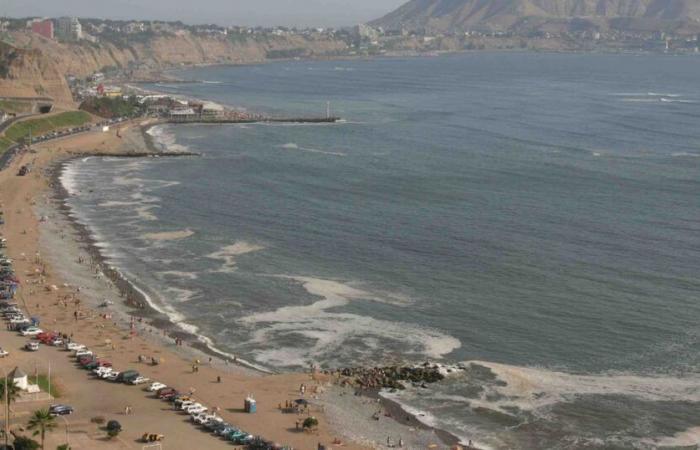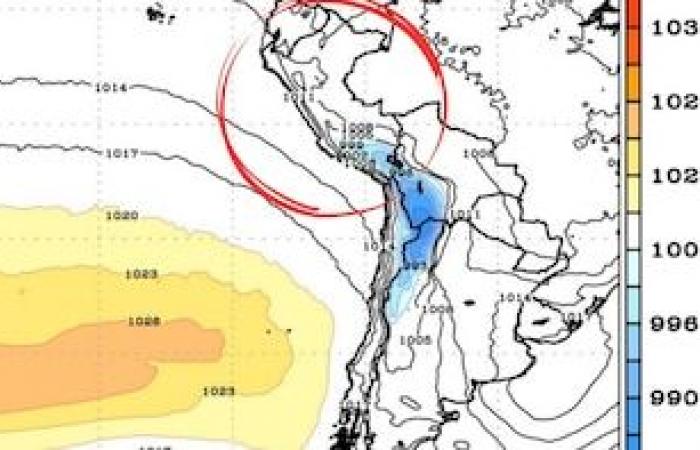He South Pacific Anticycloneclimate phenomenon influenced by high atmospheric pressures, will be strengthened as of yesterday, Wednesday, April 30, as predicted by the national Meteorology and Hydrology Service of Peru (Senamhi).
This event could alter the Meteorological conditions In several coastal regions of the country, bringing with it a significant increase in the wind speed and the presence of fog and drizzles in the early hours of the day. But what regions of the country will be more affected by this anticyclone?
According to him Meteorological notice No. 141 of the Senamhi, it is expected that the strengthening of the anticyclone will impact various departments of the Peruvian coast, with a greater intensity in the territories of Áncash, Arequipa, Ica, Freedom, Lambayeque, Lima, Moquegua, Piura, Tacnay Tumbesas well as in the Constitutional Province of Callao.

The phenomenon will extend from the Wednesday April 30 to him Friday, May 2. Wind speeds could exceed 38 km/h In the north, 35 km/h in the center and 25 km/h In the south. In addition, it is expected that in the Coast of Ica The winds reach the 40 km/h.
He Senamhi has also warned about the presence of nubal cover which will affect visibility in several coastal areas. Along with this, it will be formed fog y fogand could register drizzles during the night and the early hours of the morning.
These climatic phenomena will possibly complicate daily activities, mainly affecting drivers in the roads near the seawhere visibility could decrease dramatically due to dust and sand that will rise through winds.

Before the intensification of the winds, the National Institute of Civil Defense (INDECI) He has issued several recommendations to guarantee population safety in the possibly affected regions. Local and regional authorities are urged to carry out Security inspections In infrastructure and buildings, with the aim of ensuring that they are able to withstand the strong gusts of wind.
In addition, it is recommended reinforce structuressuch as ceilings and windows, and get away from electrical and material equipment that can be dangerous due to winds.
He Indeci It has also suggested that boats are tied in coastal areas to avoid damage due to the force of the winds. As for the population, the use of clothing is advised impermeable y shelteras well as the intake of hot drinks to mitigate the effects of cold and humidity. People with respiratory or allergic conditions should go to the nearest health center if they have climate -related symptoms.

He National Emergency Operations Center (COEN)which is part of the Indeciwill remain attentive to the developments of this phenomenon and coordinate with local and regional authorities to manage the possible effects.
Real -time monitoring will allow quick decisions and coordinate preventive actions to minimize the risks of accidents or material damage in the most affected regions.
He Strengthening of the anticyclone Not only will it alter the climate, but it could also have repercussions on the daily life of the inhabitants of the affected areas. The Wind bursts They can generate dangerous conditions for drivers and pedestrians due to the reduction of visibility, especially due to the presence of dust and sand.

The population is recommended to remain informed about the development of this atmospheric system and follow the guidelines issued by local and national authorities.
Although this type of climatic phenomena are common on the Peruvian coast, the strengthening of South Pacific Anticyclone It requires special attention, according to experts.
Senamhi is responsible for monitoring, forecasting and alerting about weather, climatic and hydrological conditions in the country. In addition, it provides technical information for risk management and the development of socio -economic activities. His work includes the analysis of extreme events such as rains, droughts and floods.







